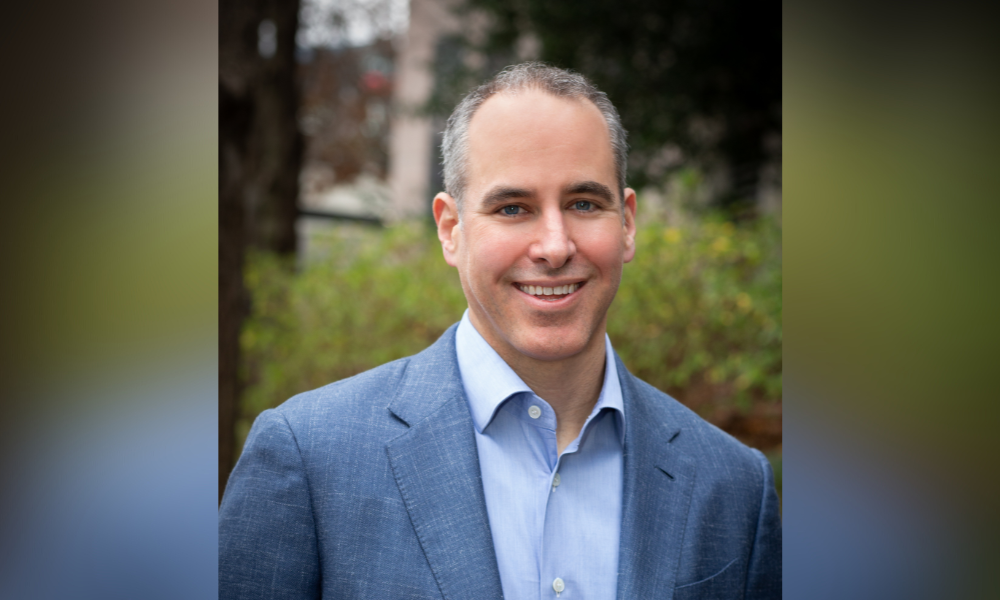CEO talks present CRE landscape

The US commercial market is still marked by mild activity where transactions are concerned – but with plenty of investors ready to capitalize on deals despite institutional lending caution, private lenders and equity firms are primed for further growth in the months ahead.
That’s according to Greg Friedman (pictured top), chief executive officer of real estate investment firm Peachtree Group, who told Mortgage Professional America that while the market continues to be relatively soft on the transaction side, there remained “a lot of dry powder” on the sidelines looking to make investments.
“It’s clear that regional banks, community banks are under heavy pressure to not do more commercial real estate lending,” he said.
“And that reduction in commercial real estate lending by the regional and community banks as well as the national banks has led to a really good opportunity set for direct private lenders to be able to go out and finance groups to acquire, develop, recapitalize, refinance loans.”
While 2023 saw some community and traditional banks sell off commercial real estate loans, that trend has grown in the opening months of this year, according to Friedman – particularly for loans with an impending 2024 maturity date.
“They’re all unwilling to do new loans, for the most part, today,” he said. “So they’re not looking to add exposure to commercial real estate unless they have pre-existing relationships with sponsors and borrowers with the largest depository relationships.”
That’s creating ample opportunity for other groups to go in and do the direct lending, with a significant need for additional debt capital as banks – which make up between 40% and 50% of the commercial real estate market – continuing to reduce their exposure.
Friedman said Peachtree is particularly attuned to that slew of impending maturities, which offer a catalyst to create new investment opportunities for the company.
“That’s causing groups to look at either selling assets or it’s motivating them to look for new capital to help come in and refinance, recapitalize existing assets,” he said.
William Fisher, EVP for non-QM at Kind Lending, anticipates a robust year ahead for the non-QM sector, driven by squeezed affordability and rising interest rates.https://t.co/UcpC7tX4kP#mortgageindustry #nonprime #nonQM #interestrates
— Mortgage Professional America Magazine (@MPAMagazineUS) February 28, 2024
Commercial outlook remains cloudy looking ahead
Concerns on the commercial real estate front have seen banking giants including Wells Fargo set aside substantial funds to mitigate potential losses, with smaller lenders prioritizing sales to private equity firms.
About $540 billion in commercial real estate loans are slated to mature in 2024, followed by $535 billion next year – meaning plenty of opportunity across the sector for those private lending organizations.
What’s more, a drastic reduction in capital expenditure by hotels over the last three years has created a lot of deferred maintenance, meaning many hotel owners across the country require a complete property improvement plan.
“That’s another catalyst that’s creating opportunities for us to make new investments,” Friedman said, “and to be able to guy and buy hotels opportunistically as well, for us to make loans to existing hotel owners and operators that are either refinancing assets in their portfolio or looking to acquire assets.”
The volume of CRE loans coming up for repayment shows no sign of dipping after 2025, either. Analysis by TD Economics suggests that around $2.2 trillion in CRE loans are scheduled for maturity through 2027, with a slowing economic cycle potentially contributing to further pain in the medium term.
That said, while interest rates are projected to remain high for now, “as the Fed monitors the progress on inflation and gears up to cut interest rates, likely starting our mid-year, an expected pullback in yields should help provide some offset,” the bank said.
“Still, it remains to be seen to what extent this would limit the fallout, or if the pullback in rates will be ‘too little, too late.’”
What type of investors are eyeing deals in the current market?
About 80% of the “dry powder” on the commercial real estate investment front is allocated to the multifamily and industrial asset classes, Friedman said, despite those two property types making up likely just over half of the entire CRE ecosystem.
That contrasts sharply with hotels, where potential investment accounts for a tiny fraction of the overall commercial market despite its current share being slightly higher.
“There’s just a lot of inefficiencies that exist within the hotel capital market side,” Friedman said, “which is another factor that we’ve been paying attention to and trying to use to our benefit to make new investments across hotels – because it continues to be a little more compelling.”
Stay updated with the freshest mortgage news. Get exclusive interviews, breaking news, and industry events in your inbox, and always be the first to know by subscribing to our FREE daily newsletter.



